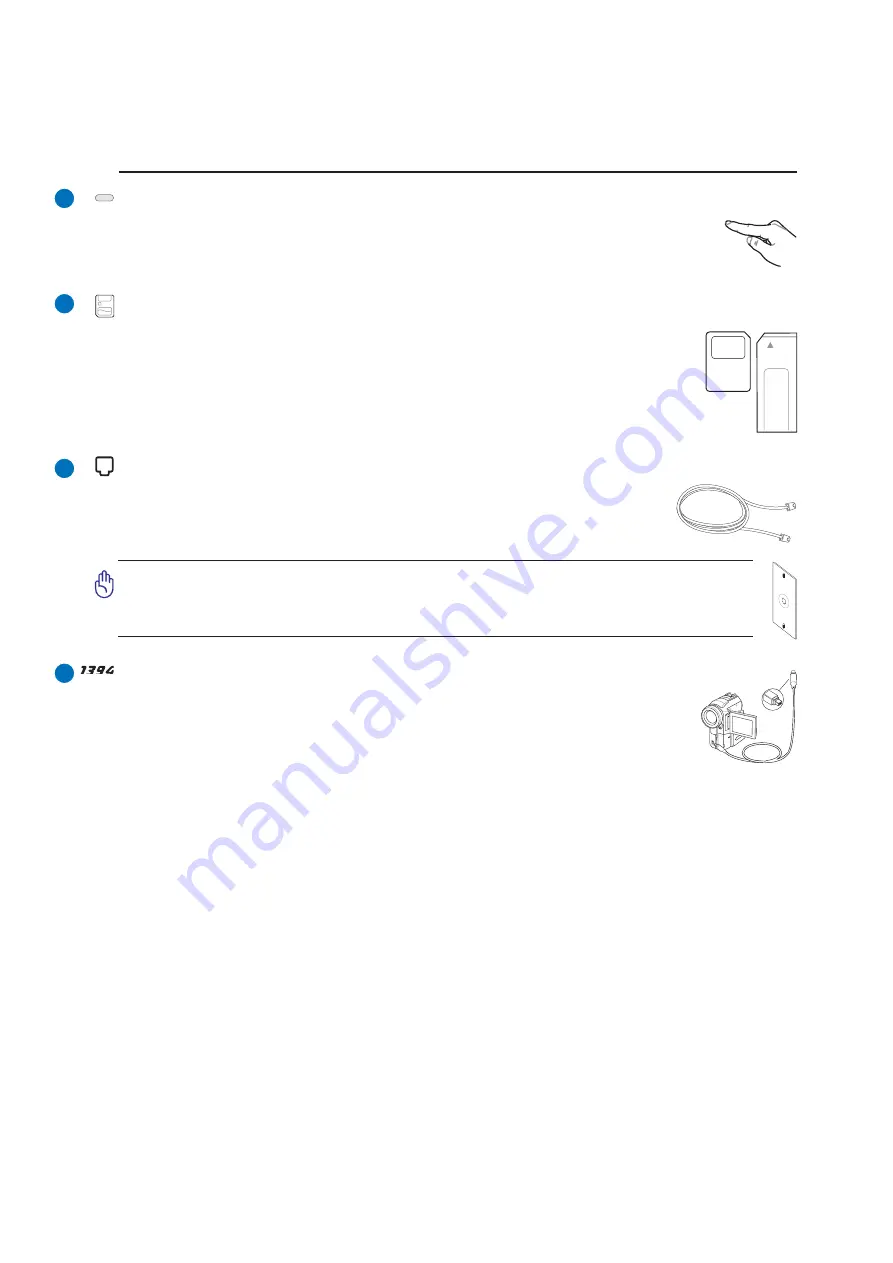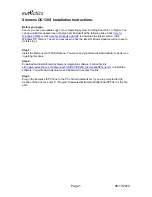
19
Knowing the Parts
2
Flash Memory Slot
Normally a PCMCIA or USB memory card reader must be purchased separately in
order to use memory cards from devices such as digital cameras, MP3 players, mobile
phones, and PDAs. This Notebook PC has a built-in memory card reader that can read
many flash memory cards as specified later in this manual. The built-in memory card
reader is not only convenient, but also faster than most other forms of memory card
readers because it utilizes the high-bandwidth PCI bus.
Modem Port
The RJ-11 modem port with two pins is smaller than the RJ-45 LAN port and sup-
ports a standard telephone cable. The internal modem supports up to 56K V.90 trans-
fers. The built-in connector allows convenient use without additional adapters.
IMPORTANT! The built-in modem does not support the voltage used in digital
phone systems. Do not connect the modem port to a digital phone system or else
damage will occur to the Notebook PC.
1394 Port
IEEE1394 is a high speed serial bus like SCSI but has simple connections and hot-
plugging capabilities like USB. The interface IEEE1394 has a bandwidth of 100-400
Mbits/sec and can handle up to 63 units on the same bus. IEEE1394 is also used in
high-end digital equipment and should be marked “DV” for Digital Video port.
Optical Drive Electronic Eject (location varies by model)
The optical drive eject has an electronic eject button for opening the tray. You can also eject
the optical drive tray through any software player or by right clicking the optical drive in
Windows “My Computer.”
6
7
8
9
Summary of Contents for U5F
Page 1: ...E2518 Mar 2006 Notebook PC Hardware User s Manual ...
Page 4: ...4 ...
Page 10: ...10 ...
Page 11: ...11 2 Knowing the Parts Basic sides of the Notebook PC ...
Page 12: ...12 2 Knowing the Parts Top Side 1 2 4 3 5 7 6 ...
Page 32: ...32 3 Getting Started ...
Page 69: ...69 Appendix A ...
















































